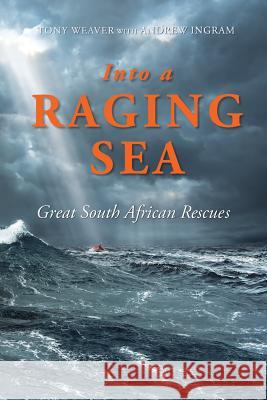Into a Raging Sea: Great South African Rescues » książka
Into a Raging Sea: Great South African Rescues
ISBN-13: 9781868427284 / Angielski / Miękka / 2016 / 256 str.
To celebrate the 50th anniversary of the NSRI, here is a collection of daring rescues filled with drama and danger. From burning ships to shark attacks, sinking trawlers to hallucinating fishermen, these are the stories of man's constant battle with some of the most dangerous waters on earth. But there is one story in particular that gave rise to the creation of the NSRI... On 12 April 1966, four fishing boats put out to sea from Stilbaai on South Africa's southern coast. Soon they were all pulling in fish as fast as they could bait their hooks, and the boats were settling lower in the water. Shortly before sunset, skipper Gerhard Dreyer saw clouds building on the horizon. But the fishing was too good and they ignored the signs. Later that night a gale force wind slammed into them. 'I told the men to throw everything overboard, ' Gerhard remembers. An hour before midnight, Gerhard headed for deeper water to try and ride out the swells. As dawn broke, they saw for the first time the true extent of the night's damage: among the flotsam, one man in a lifebuoy. That man was the only crewman from the other three boats to survive the terrible storm. Seventeen men died that night. Simonstown schoolteacher Patti Price was horrified when she read the news. She began a media campaign and appealed to the president of the Society of Master Mariners. As a direct result of her efforts, the South African Inshore Rescue Service was founded in August 1966 (renamed the National Sea Rescue Institute in 1967). Today, the NSRI has 35 rescue bases and over 1 000 volunteers.
To celebrate the 50th anniversary of the NSRI, here is a collection of daring rescues filled with drama and danger. From burning ships to shark attacks, sinking trawlers to hallucinating fishermen, these are the stories of man’s constant battle with some of the most dangerous waters on earth. But there is one story in particular that gave rise to the creation of the NSRI... On 12 April 1966, four fishing boats put out to sea from Stilbaai on South Africa’s southern coast. Soon they were all pulling in fish as fast as they could bait their hooks, and the boats were settling lower in the water. Shortly before sunset, skipper Gerhard Dreyer saw clouds building on the horizon. But the fishing was too good and they ignored the signs. Later that night a gale force wind slammed into them. ‘I told the men to throw everything overboard,’ Gerhard remembers. An hour before midnight, Gerhard headed for deeper water to try and ride out the swells. As dawn broke, they saw for the first time the true extent of the night’s damage: among the flotsam, one man in a lifebuoy. That man was the only crewman from the other three boats to survive the terrible storm. Seventeen men died that night. Simonstown schoolteacher Patti Price was horrified when she read the news. She began a media campaign and appealed to the president of the Society of Master Mariners. As a direct result of her efforts, the South African Inshore Rescue Service was founded in August 1966 (renamed the National Sea Rescue Institute in 1967). Today, the NSRI has 35 rescue bases and over 1 000 volunteers.











